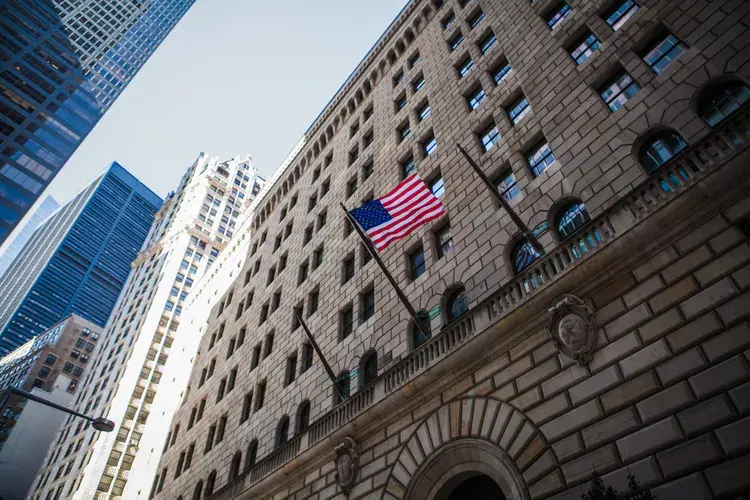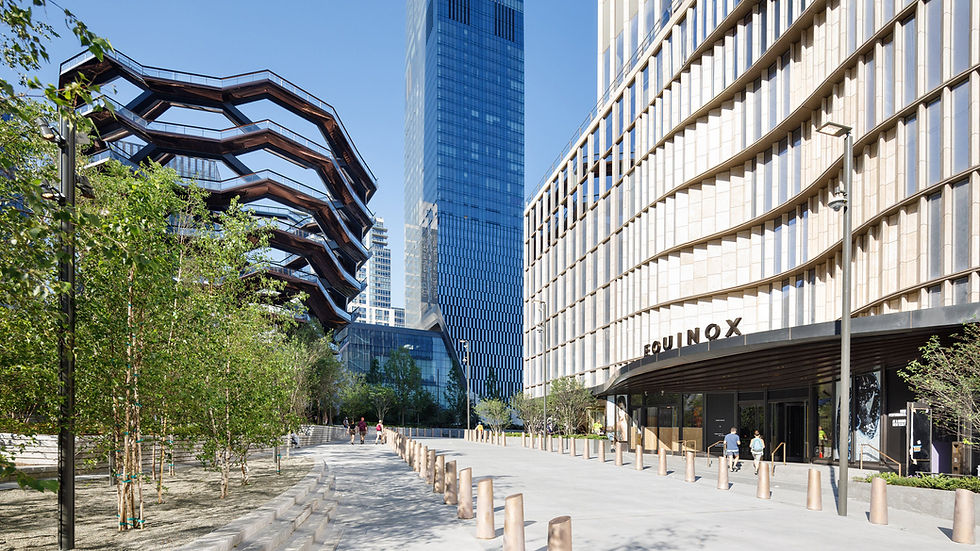Weekly Market Report - August 11, 2022
- Norman Bobrow

- Aug 11, 2022
- 5 min read
***
By the end of June, the vacancy rate for Manhattan offices stood at 17.2 percent, barely improved from the record 17.4 percent set in February. Things were particularly bleak in Lower Manhattan, where vacancies rose for nine straight quarters to a record 20.1 percent in the second quarter. But there have been signs of recovery: Citywide office occupancy — a rough estimate of attendance based on keycard-swipe data — finally reached 40 percent in June, the highest since before the pandemic. Manhattan saw five sales totaling $577.3 million (overwhelmingly driven by the top two deals on the list), Brooklyn had two totaling $15 million, Queens had one for $12 million and the Bronx had two totaling $11.2 million.
The top deal by far was for 450 Park Avenue. Partnering with foreign investors, SL Green, the city’s largest office landlord, paid $445 million for the 337,000-square-foot Plaza District office tower in June. As it picked up a property on Park Avenue, SL Green offloaded the office portion of 609 Fifth Avenue to Uri Mermelstein's Top Rock Holdings and RJ Capital in June for just over $100 million, easily claiming the second spot on the list. Fourth on the ranking is a two-story office building at 1095 Irving Avenue in Ridgewood, Queens, which an entity called ABS Box Factory LLC bought for $12 million from Brickman Irving LLC.
The fifth-priciest sale occurred at 88 North 1st Street in South Williamsburg, which went for $11 million in April. Other notable deals occurred at 103-109 East Burnside Avenue in Fordham Heights, the Bronx ($9.85 million), and 567 Third Avenue in Murray Hill ($6.8 million).
***
More than two years into the pandemic, American corporate workplaces have splintered. Some are nearly as full as they were before Covid-19 struck; others sit abandoned, printers switched off and Keurig cups collecting dust. Workers in America’s midsize and small cities have returned to the office in far greater numbers than those in the biggest U.S. cities. Some executives in large cities are hoping they’ll catch up, though they’ve been impeded by safety and health concerns about mass transit commutes, as well as competitive job markets where employees are more likely to call the shots.
In small cities — those with populations under 300,000 — the share of paid, full days worked from home dropped to 27 percent this spring from around 42 percent in October 2020. In the 10 largest U.S. cities, days worked from home shifted to roughly 38 percent from 50 percent in that same period. Offices have filled back up fastest in areas where Covid lockdowns were shortest and where commutes are done by car, according to Mr. Davis. Many cities in California and New York, in particular, have been slower to return to the office than those in Florida and Texas. Recruiters said these regional differences in office attendance and flexible work were making for a bumpier job market. Andy Challenger, the head of sales and media at the job search firm Challenger, Gray & Christmas, said he had to be newly attuned to a client’s location. He tends to warn job candidates in Texas that they should be prepared to work from an office, while he tells job candidates in California that they are more likely to be able to work from home.
Applicants interested in leadership roles might have to be prepared to take the lead on return-to-office plans by showing up every day. Design and human resources firms are also wrestling with a newly complicated assortment of client needs. For example, managers at Gensler, the architecture and design firm, have to ask clients how much they intend to use their offices so that designers know whether to create a retreat-like environment or a typical corporate space.
***
WeWork reported on Wednesday that losses improved 31 percent from a year before and that revenue grew 37 percent to $815 million. WeWork, which went public last year through a SPAC, has focused on cutting expenses and becoming profitable. Last year, WeWork CEO Sandeep Mathrani said he expected the company to start making money sometime in 2022. Barring a miracle, that will not happen. WeWork and other flex-space firms are pitching themselves to companies that are looking to shed their office leases but still keep some physical presence. WeWork’s earnings suggest the strategy is working, to an extent.
Occupancy was 72 percent in the second quarter, up by a third from a year ago. The company leases desks as well as entire floors. It is also marketing an all-access membership, which allows customers to use any of its locations around the world. That tier totaled 62,000 customers in the second quarter, an increase of 13 percent from the first.WeWork also recently launched WeWork Workplace, a software management platform in partnership with Yardi. The software provides inventory management across different office spaces. Despite WeWork’s progress in cutting expenses and finding new revenue sources, its stock remains a dud. It is trading at just under $5, a drop of close to 60 percent since it went public — about triple the S&P 500’s decline over that period.
***
Boston Properties filed plans Friday for a 982,000-square-foot office building at 343 Madison Avenue. The building is slated to stand 780 feet tall, shorter than the developer’s original plans for a 1,050-foot-tall property. The ground floor will have retail space, while the rest of the Kohn Pedersen Fox-designed building will have office and mechanical space. Last year, Boston Properties filed a land use application for the Midtown site, wanting to replace the former MTA HQ site and three adjacent lots with a supertall tower.
The developer initially proposed a 925,000-square-foot building, so while it has shrunk in height, it has grown in square footage. The MTA reportedly bought 347 Madison Avenue for $11.9 million in 1979 and the adjacent sites for $12.25 million and $23.75 million, respectively, in 1991. In 2013, the agency began seeking bids to demolish and rebuild the site. The MTA moved to 2 Broadway, but kept paying roughly $4 million to maintain its former building. Boston Properties was chosen as the winning bidder in 2016, but the city objected over questions on the developer’s share of owed property taxes.
After the pandemic brought a financial strain onto the city and the MTA, the two sides reached an agreement to move forward. It’s been projected the site could generate upwards of $1 billion in revenue for the MTA over a 99-year ground lease. Proceeds from the lease would benefit capital improvements, which will include widening stairs at several subway sections in Grand Central, as well as extending the passageway for the 7 train. Earlier in 2021, Boston Properties filed applications to demolish the three buildings at the development site, including the 15-story building that once housed the MTA’s headquarters.









Comments